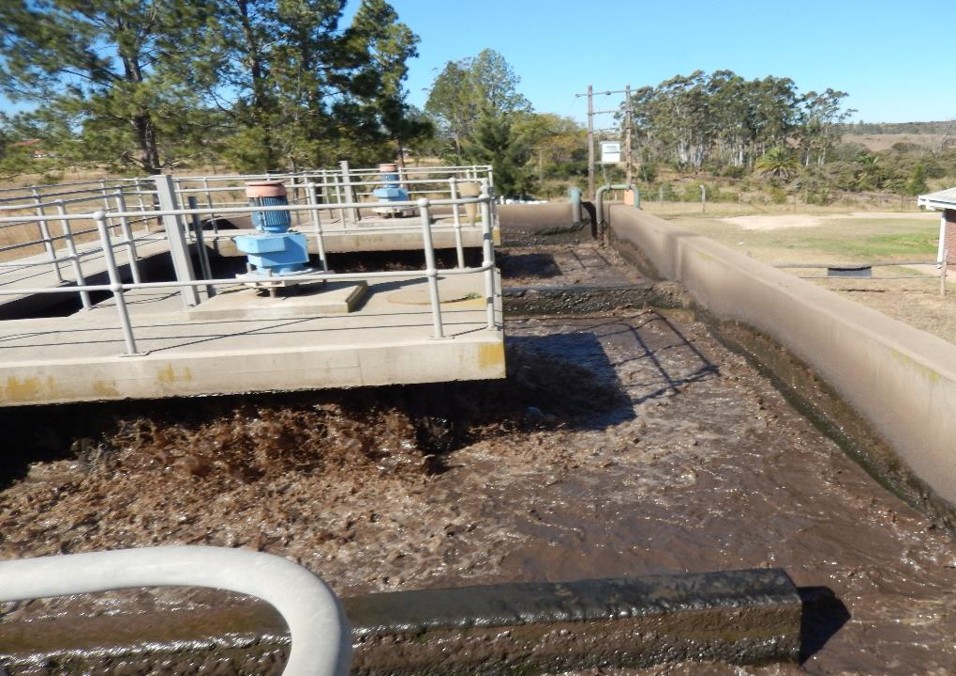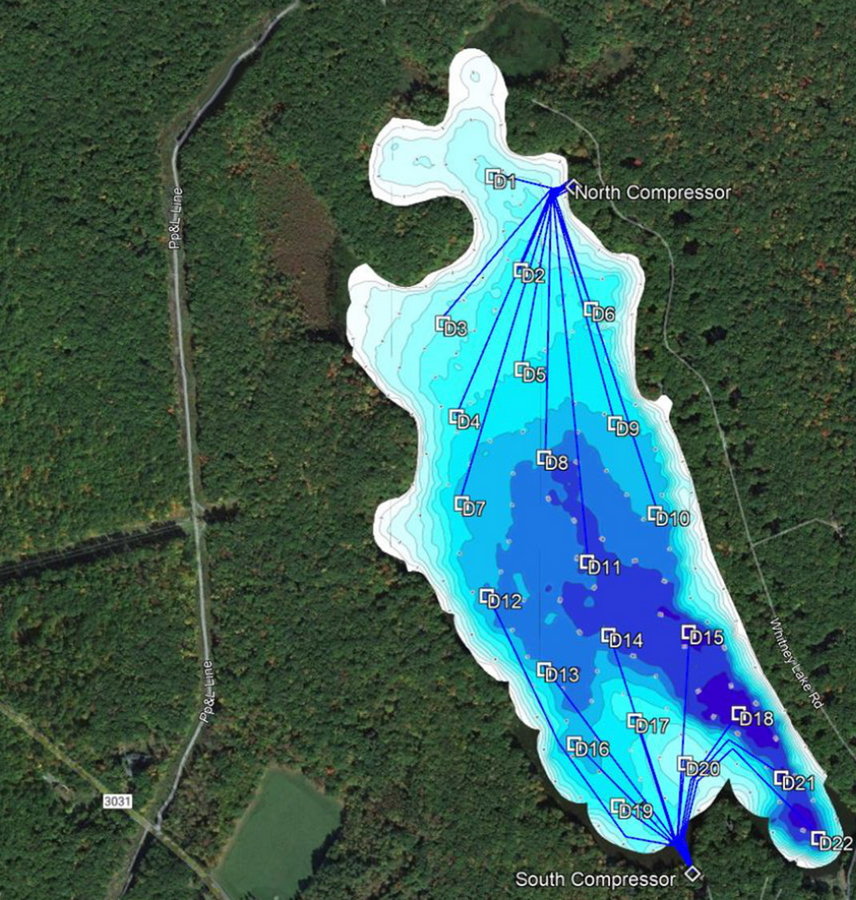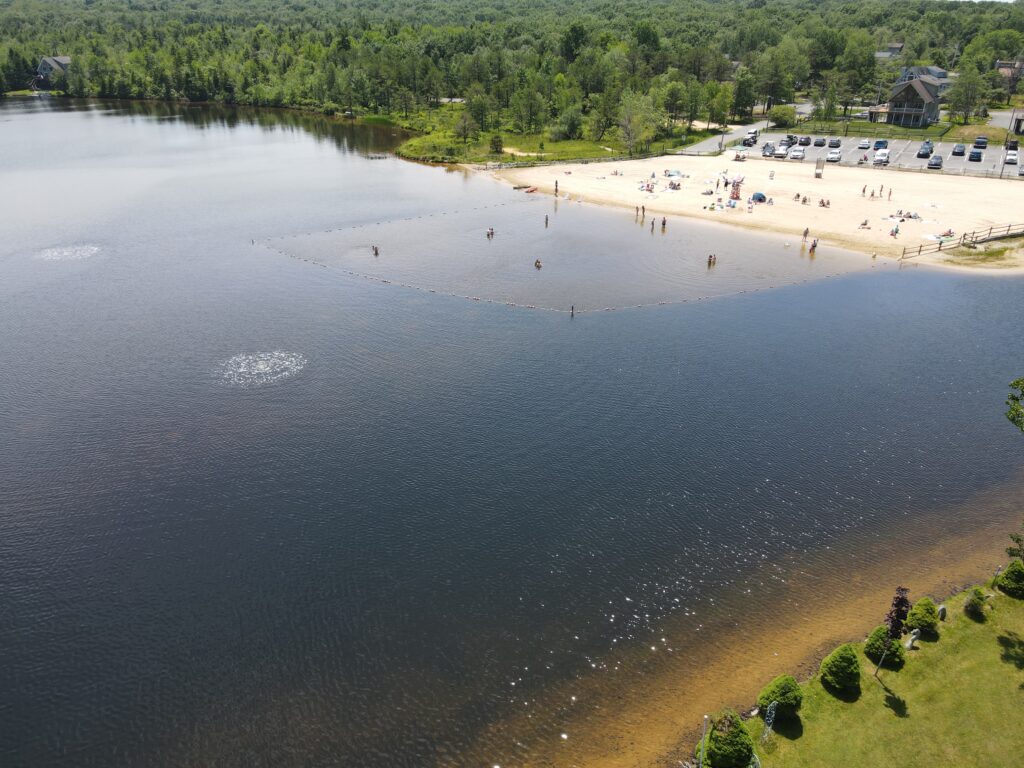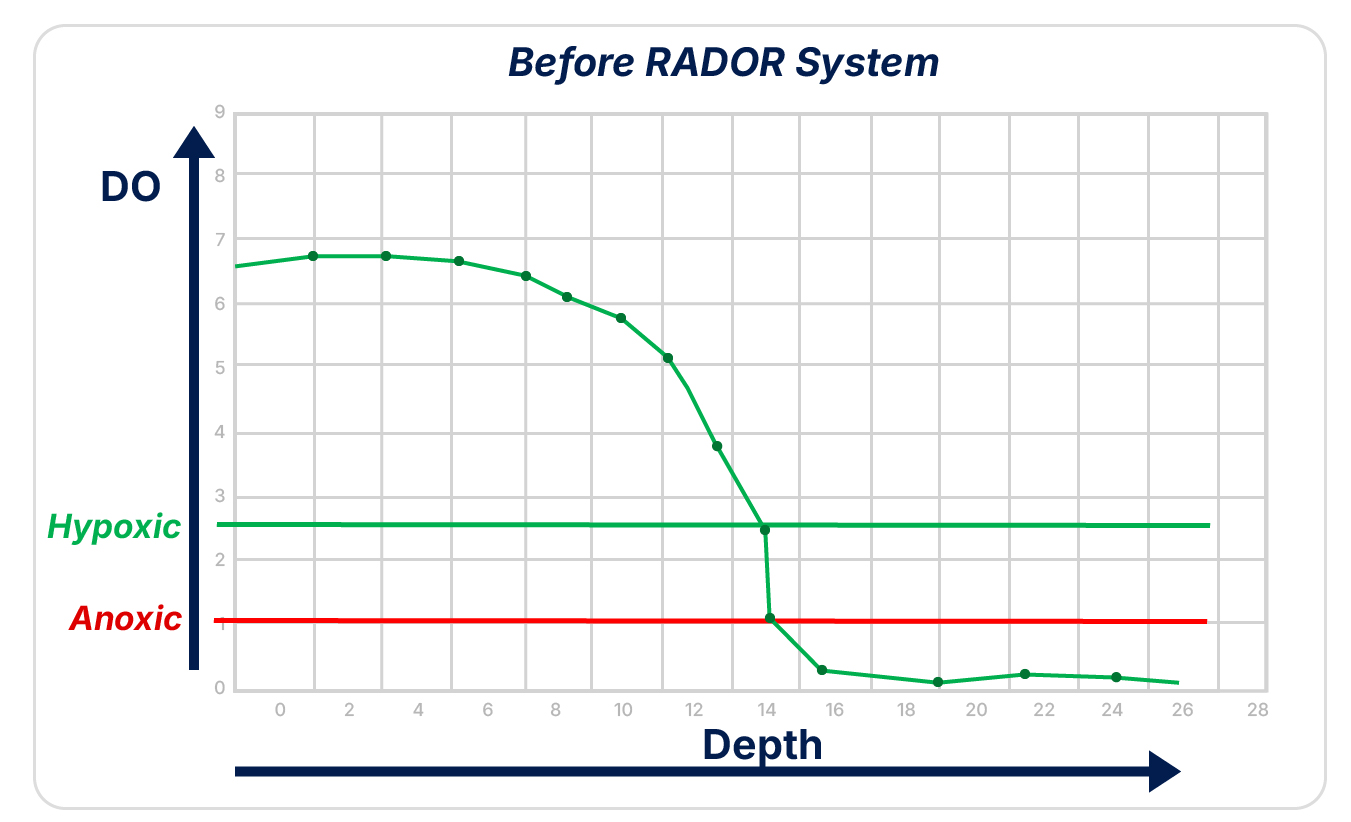

Oxygenation
What Is Oxygenation?
Oxygenation is the process of raising dissolved oxygen levels to restore aerobic conditions throughout the water column, down to the benthic margin where water and sediment meet.
It is important to note the difference between oxygenation and “aeration.”
Aeration systems were originally developed for wastewater treatment. Wastewater treatment needs to enable bacteria to absorb nutrients from the wastewater and convert them into a thick microbial sludge. This sludge is then removed in clarifying settling tanks before the water is discharged.
As a result, aeration systems are designed for use in specially constructed, relatively shallow tanks and lagoons that require turbulence to prevent microbes from clumping together and to keep them circulating and forming sludge.

Clean-Flo, and SIS.BIO (our biotechnology partner), unlike many companies that attempt to provide aeration systems for ponds and lakes, also provide aeration systems for wastewater treatment, so we understand the different requirements very well.
In rivers, lakes, and reservoirs, “aeration” systems are known to fall short in oxygenating the whole water column to maintain sustained dissolved oxygen levels at the bottom.
Moreover, the turbulence created by aeration systems can actively stir up sediment, resulting in even more intense algae blooms.
That is why our RADOR (Rapid Acting Dissolved Oxygen Restoration) oxygenation technology was specifically developed to consistently ensure full oxygenation of the water column in natural water bodies of any size or depth, allowing for the remediation and restoration of lake health.
How Does RADOR Technology differ from Aeration?
RADOR technology is proprietary and unique. Some have attempted to copy and reverse engineer RADOR technology, but their attempts have all failed, often at great cost to the clients who bought a system that didn’t work.
When evaluating the difference, it’s best to look at real life performance, rather than technical engineering explanations about compressor output or theoretical oxygen transfer calculations – in other words, measure the success of real life oxygenation in lakes and reservoirs.
When a water column is properly oxygenated, Dissolved Oxygen (DO) levels remain high throughout the water column, maintaining aerobic conditions – which means DO at 5mg/l or above. “Aeration” systems cannot achieve this at scale.
RADOR technology is different because it does exactly that – oxygenates the water all the way down to the bottom. RADOR systems have achieved this in lakes and reservoirs covering thousands of acres and over 150 feet deep.
We have often replaced “aeration” systems with RADOR systems and transformed the oxygenation of the water body in a matter of weeks.
Why Is That Important?
Unless oxygenation of the whole water column is achieved, no other remediative interventions can take place.
Oxygenation and aerobic conditions are necessary to:
- Ensure that animal life in the food web, ranging from benthic zooplankton to fish, can thrive and fulfill their role of nutrient clearance.
- Ensure that aerobic benthic microbial populations can again thrive and function to suppress the recycling of nutrients that favor toxic cyanobacteria.
- Decrease the solubility of phosphorus in benthic water to negate how this favors cyanobacteria.
- Eliminate the production of hydrogen sulfide and ammonia, which are toxic to fish and favor cyanobacteria.
How Do You Design A RADOR System?
Too often, designs depend on guesswork and patching together pre-configured off-the-shelf kits, hoping for the best.
As a remediation program progresses and accumulated sediment is Bio-Dredged away, the depth profile and volume of water contained in the water body changes. Then we run the new bathymetric data through our modeling software again to reoptimize the RADOR system for the new situation.
Our RADOR systems are designed to allow such adjustment and modification to accommodate changes in oxygenation dynamics, seasonal changes, and changes in the depth profile of the lake.
This adaptability ensures that the oxygenation system remains effective and efficient through the initial remediation process, and for years afterwards to maintain lake health, ensuring the successful restoration of the aquatic ecosystem’s health and balance is permanent.
Too often, designs depend on guesswork and patching together pre-configured off-the-shelf kits, hoping for the best.
As a remediation program progresses and accumulated sediment is Bio-Dredged away, the depth profile and volume of water contained in the water body changes. Then we run the new bathymetric data through our modeling software again to reoptimize the RADOR system for the new situation.
Our RADOR systems are designed to allow such adjustment and modification to accommodate changes in oxygenation dynamics, seasonal changes, and changes in the depth profile of the lake.
This adaptability ensures that the oxygenation system remains effective and efficient through the initial remediation process, and for years afterwards to maintain lake health, ensuring the successful restoration of the aquatic ecosystem’s health and balance is permanent.


Clean shorelines and safe, healthy beaches with RADOR Oxygenation
CLEAN-FLO
827 Lincoln Avenue, Suite 1
West Chester, PA 19380
Phone: 800-328-6656
E: contact@clean-flo.com



